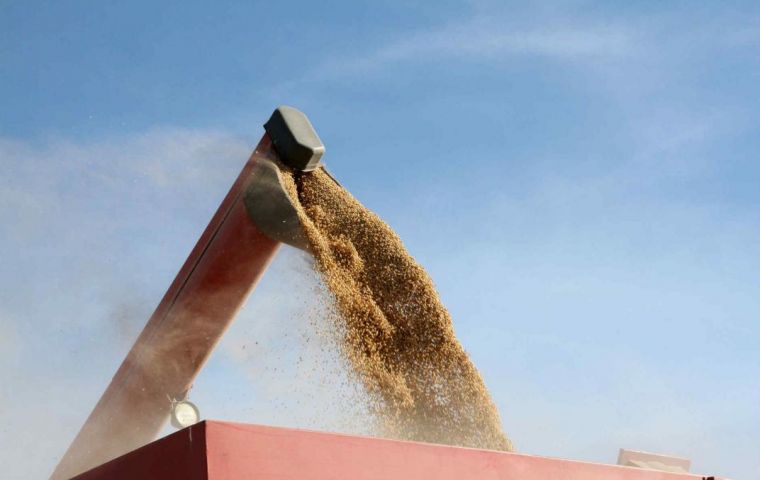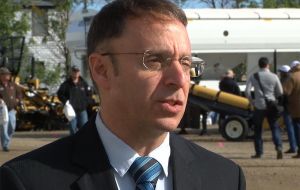MercoPress. South Atlantic News Agency
Doubts about Brazil's real soybean production estimate because of adverse weather
 At the end of November everything was looking fantastic in Brazil. Some forecasting up to 130 million tons, saying this is the greatest crop ever
At the end of November everything was looking fantastic in Brazil. Some forecasting up to 130 million tons, saying this is the greatest crop ever  Drew Lerner, president of World Weather Inc., said the first three weeks of December saw poor rainfall distribution in southwestern Brazil in states
Drew Lerner, president of World Weather Inc., said the first three weeks of December saw poor rainfall distribution in southwestern Brazil in states Analysts are casting doubt on the Brazilian government’s soybean production estimate. Conab, the government’s food supply and statistics agency, recently issued a forecast for 118.8 million tons of production, only slightly smaller than last year’s record 119.4 million tons.
The forecast put a damper on the soybean market, which was expecting a much bigger decline due to dry conditions in December. Michael Cordonnier, president of Soybean & Corn Advisor, said the Conab data is two weeks old.
“They’re always behind the curve, especially when everything is changing very quickly,” he said. He has seen private company estimates out of Brazil ranging from 110 million tons to 118 million tons Cordonnier is at 116 million tons with a considerable downside bias.
At the end of November everything was looking fantastic in Brazil. “There were some people (forecasting) up to 130 million tons, saying this is the greatest crop ever,” he said. But then there was an abrupt change.
Drew Lerner, president of World Weather Inc., said the first three weeks of December saw poor rainfall distribution in southwestern Brazil in states like Mato Grosso do Sul, Parana and Sao Paulo.
It became dry just when a lot of the crop was in the pod-setting and pod-filling stage of development. “We have a customer in that area and he reported to us right away that he had already lost 15 to 20%,” said Lerner.
The south received some precipitation over the Christmas and New Year’s period but conditions are once again deteriorating, placing crops in sandy soils under duress. “There will be some additional losses,” said Lerner.
Cordonnier said Brazil’s soybean crop got in the ground early and is two weeks ahead of normal development. Yield losses for some of the earliest seeded soybeans could range from five to 30%.
He is most concerned about crops in central Brazil where it has been hot and dry.
“The soils don’t hold water very good, the temperatures are very hot, the solar radiation is much, much more intense, so you go downhill quicker,” said Cordonnier.
“A soybean crop in central Brazil can go from fine to wilted in four or five days because the soils don’t hold water very well, so the crop is at risk.”
World Weather Inc. forecasts that Brazil will work its way out of the dry bias in late-January and early-February with some light showers and then return to normal rainfall by mid- to late-February.




Top Comments
Disclaimer & comment rulesCommenting for this story is now closed.
If you have a Facebook account, become a fan and comment on our Facebook Page!